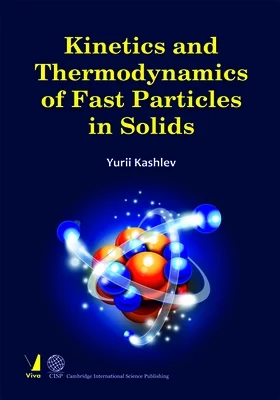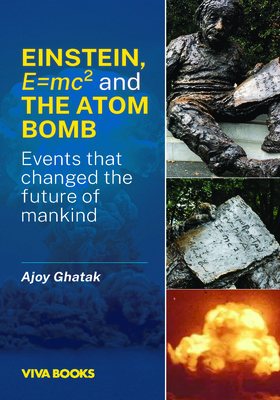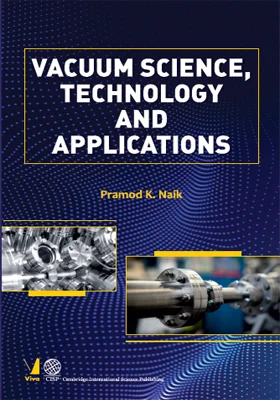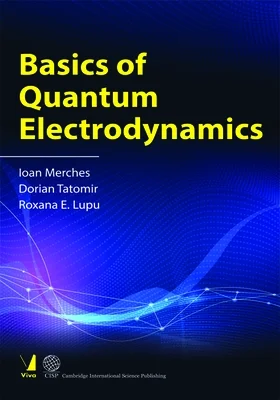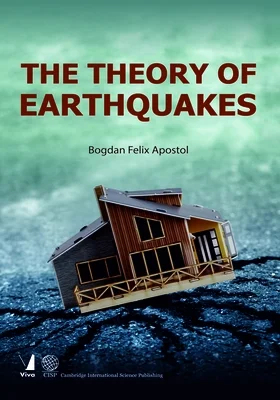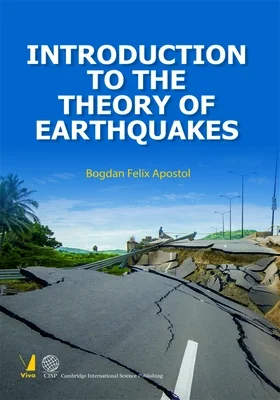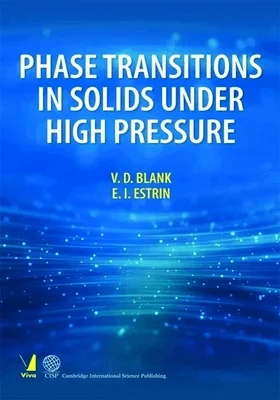Kinetics and Thermodynamics of Fast Particles in Solids
Kinetics and Thermodynamics of Fast Particles in Solids
₹1,615.50 ₹1,795.00 Save: ₹179.50 (10%)
Go to cart-
Out of Stock
ISBN: 9789392299322
Bind: Hardback
Year: 2022
Pages: 296
Size: 6 x 9 Inch
Publisher: Cambridge International Science Publishing
Published in India by: Viva Books
Exclusive Distributors: Viva Books
Sales Territory: India, Nepal, Pakistan, Bangladesh, Sri Lanka
Description:
Kinetics and Thermodynamics of Fast Particles in Solids examines the kinetics and non-equilibrium statistical thermodynamics of fast charged particles moving in crystals in different modes. It follows a line of research very different from traditional ways of constructing a theory of radiation effects, which gives a purely mechanistic interpretation of particle motion. In contrast, this book takes into account the thermodynamic forces due to separation of the thermodynamic parameters of the subsystem of particles (“hot” atoms) on the parameters of the thermostat (electrons and lattice), in addition to covering the various mechanisms of collisions.
Topics include:
- Construction of a local kinetic equation of Boltzmann type for fast particles interacting with the conduction electrons and lattice vibrations, on the basis of the principles of Bogolyubov’s kinetic theory
- Calculation of the equilibrium energy and angular distributions of fast particles at a depth of the order of coherence length, and the evolution of particle distribution with increasing depth of penetration of the beam
- Calculation of transverse quasi-temperature of channeled particles with the heating of the beam in the process of diffusion of particles in the space of transverse energies, as well as cooling the beam through a dissipative process
- Research in the framework of non-equilibrium thermodynamics of the relaxation kinetics of random particles, including the thermodynamics of positronium atoms moving in insulators under laser irradiation
- Analysis of the kinetics of hot carriers in semiconductors and thermalization of hot carriers, as well as the calculation of the statistical distribution of ejected atoms formed during the displacement cascade
The book sets a new direction of the theory of radiation effects in solids—nonequilibrium statistical thermodynamics of fast particles—and aims to focus and aid the reader in the study of new areas of investigation in this area.
Target Audience:
This textbook a useful guide for those studying physics and chemistry at both graduate and undergraduate levels.
Contents:
Preface
1. THEORETICAL BACKGROUND AND MODEL PRESENTATION • Two theoretical disciplines: non-equilibrium statistical mechanics and non-equilibrium statistical thermodynamics • Short description of the non-equilibrium system • Channeling effect of charged particles • A brief overview • Some assumptions of the classical theory of channeling
2. CHANNELING OF CHARGED HIGH-ENERGY PARTICLES AS A STOCHASTIC PROCESS • Markov process with a normal (Gaussian) distribution • Transport coefficients of channeled particles in electron scattering (non-local theory) • Fokker–Planck equation with fluctuations. The diffusion function and the friction coefficient • Stochastic theory for the thermodynamic level of description • Kinetic features of channeled particles in the presence of thermal lattice vibrations (local theory) • Local matrix of random effects • Diagonal element of the local matrix. Correlation of random effects • The system of stochastic equations and Fokker–Planck equation. Kinetic features of the local theory • Dechanneling • The average lifetime of a dynamic system under random effects • Eigenvalues of the kinetic Fokker–Planck equation and the main functions of the theory of dechanneling • Three modes of motion of fast particles • The angular distribution of backscattered particles incident on thin crystals in the direction of chains or planes. Elastic collisions with atoms of the ‘frozen chain’ • The energy distribution of backscattered particles. Elastic electron scattering • Singularities of the energy losses in the local theory
3. LOCAL BOLTZMANN KINETIC EQUATION AS APPLIED TO PLANE AND AXIAL CHANNELING • The distribution function for the complex of a fast particle and r atoms in the crystal • The chain of BBGKY equations in channeling theory • Local linearized Boltzmann equation • Planar channeling • Axial channeling. The limiting case of a spatially homogeneous environment • The equation of local balance of the number of particles in the channeling problem • Diagonal element of the matrix of effects in electron scattering • Features of the kinetic functions as a consequence of locality of the theory • Transition to the kinetic Boltzmann equation in the theory of rarefied gases
4. TWO CLASSES OF IRREVERSIBLE PROCESSES IN STATISTICAL THEORY OF CHANNELING • Phase mixing and dissipative processes • Phase mixing at shallow depths of penetration (S-contributions) • Phase shifts of the trajectories. The role of anharmonicity of the particles in the process of approach to quasi-equilibrium • Evolution of the depth of distribution of channeled particles on the transverse coordinates • Local and non-local theory of the state density of fast particles • The linear theory of reaction • Symptoms of a mechanical disturbance • Dissipative process (V-contributions) at low velocities of channeled particles
5. NON-EQUILIBRIUM STATISTICAL THERMO- DYNAMICS AS APPLIED TO CHANNELING • General view of the statistical operator for non-equilibrium systems • Non-equilibrium statistical operator in quantum theory of channeling • Model representations. Thermodynamic parameters • Invariant part of the quasi-equilibrium statistical operator. The particle number flux • Definitions of the quantum theory of dechanneling • Expressing the rate constant by means of spectral intensity • The total Hamiltonian of the system which includes electrons and fast particles • Fokker–Planck–Kolmogorov finite difference equation • The statistical coefficient of dechanneling rate • The kinetic coefficient in quantum theory • Semi-classical approximation • The rate of release of particles from the channeling regime, taking into account the spatial separation of directional beam • Resonant transition of particles to the quasi-channeled fraction. Relaxation frequency • Dechanneling due to the resonance transitions
6. NON-EQUILIBRIUM STATISTICAL THERMODYNAMICS OF DIRECTIONAL PARTICLE BEAMS CONCEPT OF TRANSVERSE QUASI-TEMPERATURE • Formulation of the theory based on expansion of the non-equilibrium statistical operator • The energy–momentum balance equation in the comoving coordinate system • Linearization of the balance equation • The solution of the balance equation • The dependence of equilibrium distributions on transverse quasi-temperature (axial channel) • The angular distribution of channeled particles after passing through a thin crystal • Determination of transverse quasi-temperature based on experimental data • Distribution of particles over exit angles in backscattering • Quasi-temperature of strongly non-equilibrium systems • Dependence of the coefficient of the dechannelling rate and dissociation of molecules in plasma on quasi-temperature • Quasi-temperature as quasi-equilibrium distribution modulus • Comparative analysis: channeled particles and the spin gas • Spin temperature in a strong magnetic field • Statistical characteristics of channeled particles and the spin gas
7. NON-EQUILIBRIUM THERMODYNAMICS OF CHAOTIC PARTICLES • Relaxation kinetics and quasi-temperature of positronium atoms • Ore model. The energy balance equation • Phonon and electron scattering on positronium atoms • Eigenvalue of the relaxation matrix and quasi-temperature of positronium • Thermalization of positronium atoms • Thermodynamics of hot charge carriers in semiconductors • Separation of subsystems into fractions and thermodynamic parameters of fractions • Kinetic equations for carriers and quasi-temperature of carriers and quasitemperature of optical phonons • Evolution of quasi-temperature of carriers during thermalization • Displacement cascade and thermodynamics of knocked-on atoms • Cascade function. Geometric parameters of the cascade • Transition to the thermodynamic description level • The energy balance equation of knocked-on atoms • Quasi-temperature of the subsystem of knocked-on atoms and thermodynamic stability of states • Discussion of the concept of the quasi-temperature of knocked-on atoms • Kinetics of thermal sputtering
8. STATISTICAL THERMODYNAMICS OF LIGHT ATOMS MOVING WITH THERMAL VELOCITY • Coefficient (constant) of the exit velocity of particles from the potential minimum • Tunneling transitions of hydrogen atoms due to the collapse of local deformation in the bcc lattice • Thermally activated tunneling in bcc metals • Concluding remarks on the migration of hydrogen atoms • Thermal fracture of activation energy near Debye temperature θD • Classical and anomalous isotope effects • Departure from the concept of hopping conduction of small radius polarons
CONCLUSION
REFERENCES
INDEX
